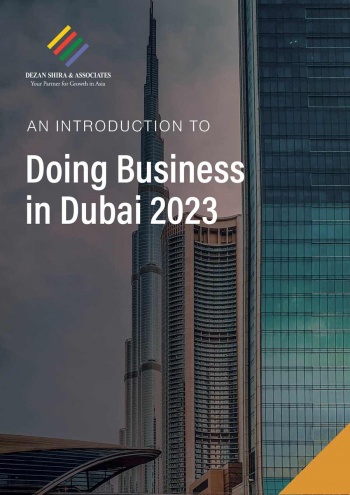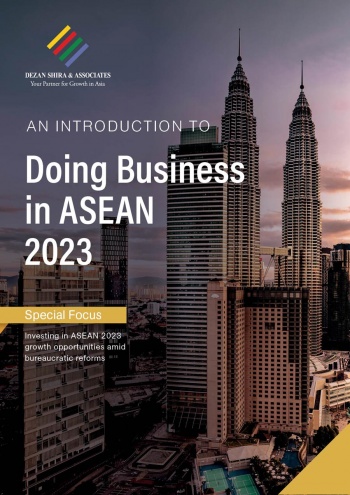UAE Economic Outlook 2024: Resilience, Growth, and Strategic Initiatives
The UAE demonstrates economic resilience with GDP forecasts pointing at a robust 5.7 percent growth. Strategic initiatives, including diversification efforts and sustainable development goals, are key to meeting this. Increasingly, the UAE’s non-oil sectors like real estate, tourism, and transportation are contributing to the UAE’s economic growth trajectory, highlighting adaptability, policy support, and innovation.
By Giulia Interesse
Amidst global economic challenges, the United Arab Emirates (UAE) demonstrates resilience, with strategic initiatives in place to navigate uncertainties and foster growth within its economy.
On February 1, 2024, Younis Haji Al Khoori, the Undersecretary of the Ministry of Finance (MoF), offered insightful projections and statements concerning the UAE’s economic trajectory for 2024.
Similarly, the recent adjustment by the Central Bank of the UAE, elevating the projected GDP expansion to 5.7 percent from the earlier projection of 4.3 percent, underscores the nation’s economic optimism and proactive policies.
These forecasts, alongside Al Khoori’s emphasis on diversification and sustainable development, paint a promising picture of the UAE’s economic resilience and growth potential in 2024.
UAE economic outlook 2024: Central Bank’s economic report and projections
The Central Bank of the UAE (CBUAE) adjusted the growth forecast of the UAE in 2024 – now expecting a robust expansion of 5.7 percent – indicating the bank’s optimism about the country’s economic prospects, as reported by Emirates News Agency WAM.
The Q3 2023 CBUAE’s Quarterly Economic Review, released in December 2023, emphasizes that the overall GDP for the UAE is forecast to grow by 3.1 percent in 2023. Specifically, the projection anticipates a non-oil GDP growth of 5.9 percent in the same year, followed by a moderated yet substantial growth rate of 4.7 percent in 2024. Meanwhile, oil GDP growth is estimated to reach 8.1 percent in 2024.
The analysis from the CBUAE reveals that the UAE economy saw a 3.8 percent year-on-year (YoY) growth in the second quarter of 2023, compared to 8 percent during the same period in 2022. Additionally, non-oil GDP growth surged to 7.3 percent YoY in the second quarter of 2023, up from 4.5 percent YoY in the previous quarter and 6.4 percent YoY compared to the same period in 2022.
The CBUAE’s report underscores the sustained strength of non-oil private sector economic activity. In October 2023, the Purchasing Managers’ Index (PMI) for the UAE reached 57.7, marking its highest level since June 2019. This improvement in working conditions stemmed from a significant rise in business activity and new orders, especially in new export orders, which experienced the fastest growth pace in over four years.
Furthermore, the report indicates that PMI data generally signaled robust growth in the non-oil sector throughout the third quarter of 2023. Companies remained optimistic about expectations for the next 12 months, indicating a positive sentiment towards future economic performance.
Real estate, tourism, and transportation: Key economic performance
The UAE’s economic landscape in the third quarter of 2023 witnessed significant developments across various sectors, notably real estate, tourism, and transportation.
Real estate, a cornerstone of the nation’s economy, sustained its momentum with robust performance continuing from July to October 2023. In Abu Dhabi, residential transactions surged by 56 percent YoY to AED 67.8 billion in the first nine months of the year, accompanied by a 3.2 percent increase in average sales prices for residential properties during Q3 2023. Similarly, Dubai experienced a remarkable 37 percent YoY increase in the value of real estate transactions, surpassing AED 500 billion in the first 10 months of the year, signaling strong investor confidence and market resilience.
The tourism and hospitality sectors showcased resilience and growth, aligning with the UAE’s ambitious National Tourism Strategy 2031. Abu Dhabi’s hospitality sector reported a 31 percent YoY rise in total hotel guests, reaching 3.2 million in the first eight months of 2023, with notable increases in occupancy rates and average revenue per room. Meanwhile, Dubai remained a global tourism hub, boasting a 4.9 percentage point increase in hotel occupancy rates compared to 2022, and a significant YoY increase in international visitors, reaching 12.4 million during the first nine months of the year.
In the transportation sector, both Abu Dhabi and Dubai airports witnessed substantial increases in passenger traffic, reflecting growing connectivity and global reach. Abu Dhabi International Airport recorded a notable 29.3 percent YoY increase in passenger traffic in Q3 2023, reaching almost 6 million passengers, while Dubai Airports revised its passenger forecast for 2023 to 86.8 million, indicating a resurgence in travel demand.
Summary
All in all, the UAE’s economy continues to exemplify resilience, showcasing notable performance and strategic initiatives to navigate uncertainties and foster growth within its economy. Indeed, the recent forecast adjustment by the CBUAE, along with Al Khoori’s emphasis on diversification and sustainable development, paint a promising picture of the UAE’s economic resilience and growth potential in 2024.
In particular, the projections for non-oil GDP growth serve as a testament to the UAE’s economic dynamism, showcasing a robust economic ecosystem beyond its traditional oil sector. The surge in the non-oil private sector, exemplified by the PMI’s surge in Q3 of 2023, signals a swift post-COVID-19 recovery and the resurgence of economic activity in the country.
Furthermore, the MoF’s emphasis on adhering to the UAE’s Principles of the 50, which reflect a dedicated commitment to national development as a primary objective, underscores the strategic vision shaping the nation’s economic policies. These forward-looking strategies not only align with the nation’s long-term goals but also position the UAE on a trajectory of sustained growth and prosperity.
By navigating challenges with resilience and foresight, the UAE demonstrates its readiness to adapt and thrive in the face of evolving economic dynamics.





